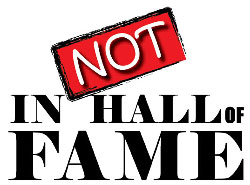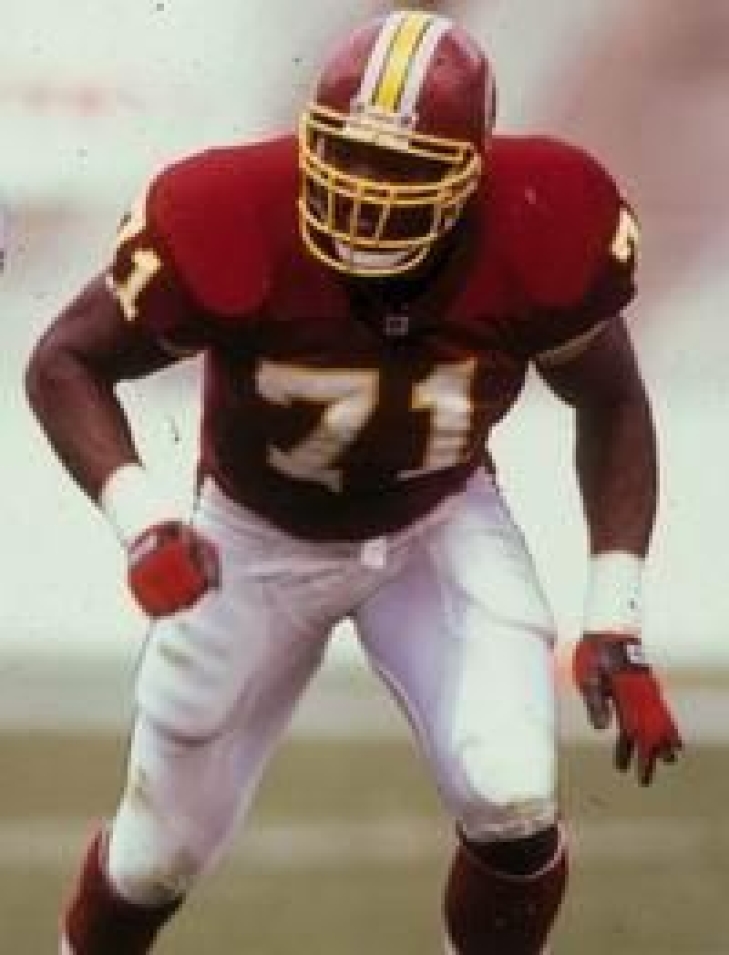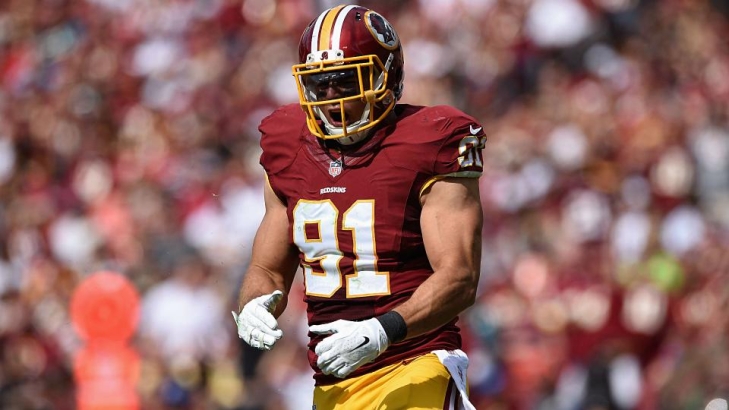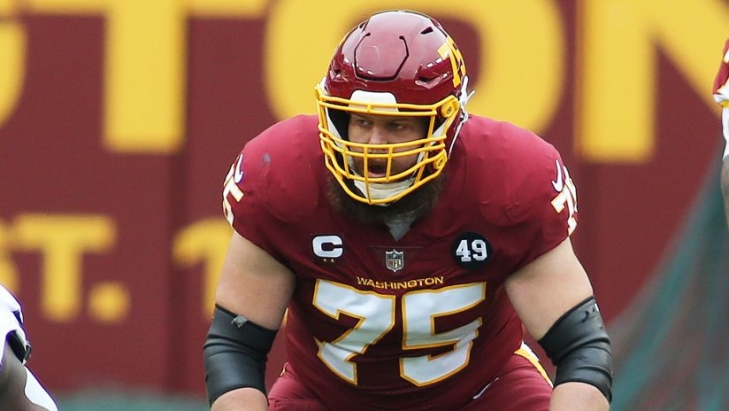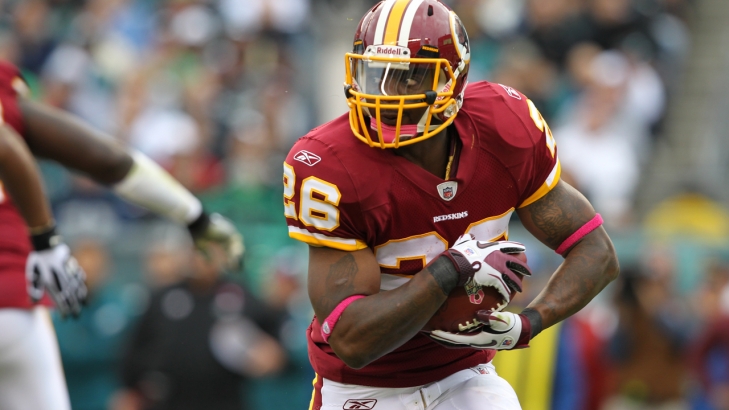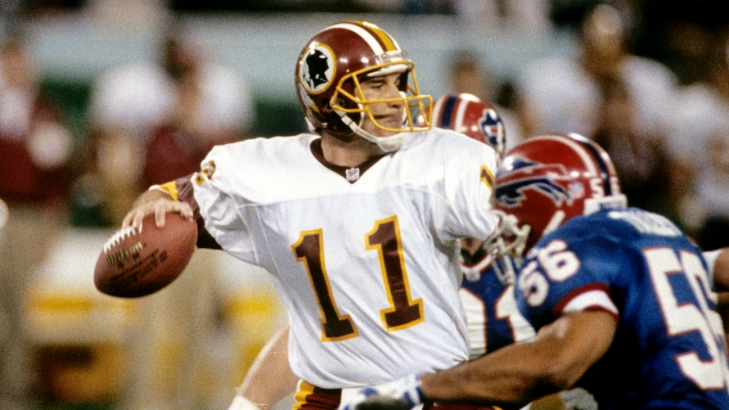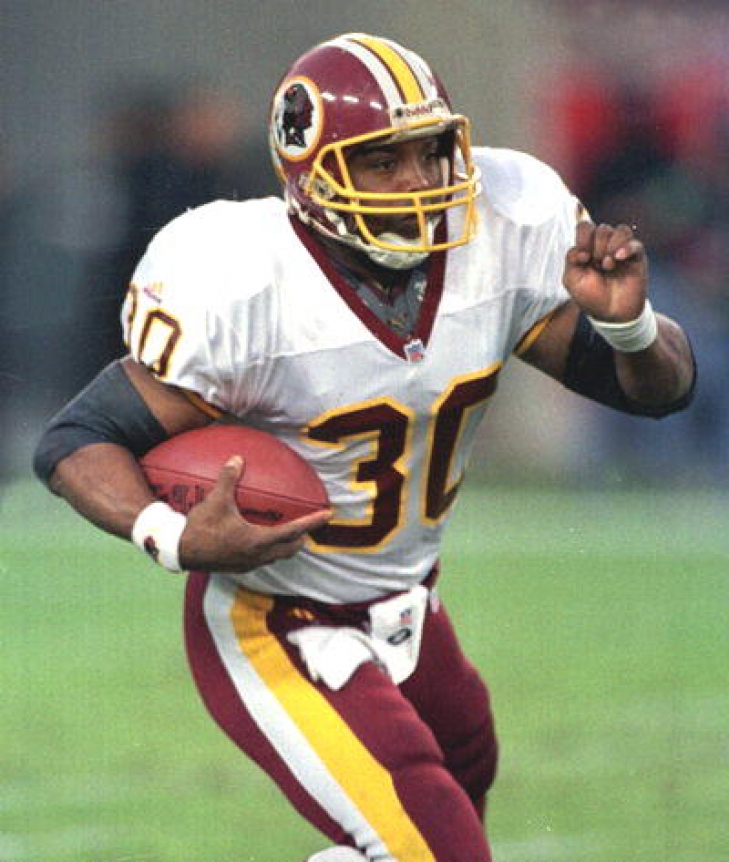288. Charles Mann
From the University of Nevada, Charles Mann became a starter at Defensive End in his second season, where he was a punisher on the pass rush. Playing for the Washington Redskins for his first 11 Seasons (1983-93) had 82 of his 83 career Sacks with Washington, including three four seasons in the double-digits.
Mann went to four Pro Bowls with the Redskins (1987, 1988, 1989 & 1991), and helped them win two Super Bowls (XXII & XXVI). He was especially strong in the 1987 postseason, accruing 4.5 Sacks in the playoffs. Mann was praised for his work ethic and leadership and was one of the most beloved players in Redskins defensive history in and out of the locker room.
Following his release from Washington in 1993, Mann signed with the San Francisco 49ers where he played one final season and helped in a reserve role win his third Super Bowl.
Ryan Kerrigan
Ryan Kerrigan was the 2010 Big Ten Defensive Player of the Year, and you would expect from a player who won such an accolade, he went high in the draft. The Washington Redskins took him 16thOverall, where he became their starting Right Defensive End as a rookie.
Kerrigan moved to Outside Linebacker as a sophomore, and he was a Pro Bowl in 2012. An expert pass-rusher. Kerrigan led the NFL in Forced Fumbles (5) in 2014, and Tackles for Loss (18) in 2016, and he has had four 10-plus Sack years. The former Purdue Boilermaker went to three more Pro Bowls consecutively (2016-18). Kerrigan's output declined in 2019, and he was coming off of the bench in 2020, which would be his final year in Washington, as Kerrigan signed with division rival Philadelphia, but that would only be for one year before he retired.
Kerrigan had 95.5 Sacks and 120 Tackles for Loss over his career.
40. Brandon Scherff
In 2014, Brandon Scherff of Iowa won the Outland Trophy as the Nation’s top Lineman, and unsurprisingly, he was the first Offensive Linemen taken during the 2015 Draft when Washington took him Fifth Overall.
317. Ron McDole
Ron McDole’s professional football career got off to a slow start as the former Nebraska Cornhusker did not accomplish much in 1961 as a rookie with the St. Louis Cardinals. 1962 was worse, as he migrated to the Houston Oilers of the American Football League and played even less.
Our All-Time Top 50 Washington Football Team are now up
Yes, we know that this is taking a while!
As many of you know, we here at Notinhalloffame.com are slowly generating the 50 of each major North American sports team. We have a new one to unveil today, that of the Washington Football Team.
The Washington Football Team can be traced back to 1932 where they originally the Boston Braves, a nickname that existed one year, before they became the Boston Redskins. They relocated to Washington, keeping the Redskins name in 1937, and they won the NFL Championship in both 1937 and 1942 on the strength of Sammy Baugh.
They struggled throughout the 1950s and 1960s, slowly reascending in the 1970s, and winning two Super Bowls in the 1980s (XVII & XXII) and a third in the early 90s (XXVI) on back of the Redskins Offensive Line, the famed “Hogs”.
Prior to the 2020 season, societal pressure caused them to dismiss the Redskins nickname.
As for all of our top 50 players in football we look at the following:
1. Advanced Statistics.
2. Traditional statistics and how they finished in the NFL.
3. Playoff accomplishments.
4. Their overall impact on the team and other intangibles not reflected in a stat sheet.
Remember, this is ONLY based on what a player does on that particular team and not what he accomplished elsewhere and also note that we have placed an increased importance on the first two categories.
This list is updated up until the end of the 2019-20 Season.
The complete list can be found here, but as always, we announce our top five in this article. They are:
1. Sammy Baugh
5. Art Monk
We will continue our adjustments on our existing lists and will continue developing our new lists.
Look for our more material coming soon!
As always we thank you for your support.
50. LaVar Arrington
LaVar Arrington was taken second Overall in 2000, and the Linebacker from Penn State was coming off one of the greatest defensive seasons by a Nittany Lion. In 1999, Arrington won the Butkus Award, Bednarik Award, and Lambert Award and was a two-time All-American.
49. Ron McDole
Ron McDole made his Pro Football debut with the St. Louis Cardinals in 1961, after which he was a Houston Oiler for four Games. McDole stayed in the AFL with the Buffalo Bills, where he had his greatest success, winning two AFL Championships and was twice an AFL All-Star. This didn’t mean that when he signed with the Washington Redskins in 1971 that he didn’t have a lot offer his new team.
48. Joe Lavender
A Philadelphia Eagle for the first three years of his career, Joe Lavender was traded to the Washington Redskins after the 1975 Season.
47. Mark Moseley
Mark Moseley’s rise to MVP has to be one of the most unlikely ones in NFL history…and not just because he is a Place Kicker.
45. Billy Kilmer
Billy Kilmer was one of the many frustrated players in the early years of the New Orleans Saints, and when they drafted Quarterback, Archie Manning, Kilmer saw the writing on the wall and asked to be traded. He got his wish when they traded him to Washington in January of 1971.
44. Hugh Taylor
Hugh Taylor was an All-American basketball player at Tulane in 1943, but he served in the Navy for two years after. Upon his discharge, he played a year of college football at Oklahoma City (not Oklahoma or Oklahoma State), and he went undrafted. The Washington Redskins signed him in 1947, and it was arguably the best undrafted signing in franchise history.
46. Clinton Portis
Clinton Portis played his first two years in the NFL with the Denver Broncos, and the sports world was stunned when he was traded to the Washington Redskins for Champ Bailey. It has mostly pontificated that Denver won the trade, but Portis was still a productive rusher for the Redskins.
43. Mark Rypien
The career of Mark Rypien is an interesting one, but as much as some people could say that he was lucky, he was also very good when needed to be.
42. Brian Mitchell
If you are an all-time leader in any NFL stat, it stands to reason that you were pretty damned good. This is who we are talking about next in Brian Mitchell, who is the all-time leader in Kick Return and Punt Return Yards, much of which was accomplished as a member of the Washington Redskins.
39. Brig Owens
The Dallas Cowboys drafted Cincinnati’s Brig Owens in 1965, but he never made it past the Taxi Squad. He was packaged in a five-player deal to the team that would become their fierce rivals, the Washington Redskins after that year, and it was in D.C. where the Safety played his entire pro career.
38. Neal Olkewicz
Undrafted out of the University of Maryland in 1979, Neal Olkewicz signed with the Washington Redskins, making the team. As it turned out, Olkewicz did not just make the roster; he became a starting Linebacker for the Redskins for over a decade.
41. Ken Harvey
A First Round Pick from California, Ken Harvey played his first six seasons with the Phoenix Cardinals. While he was a serviceable NFL Linebacker, he was not a star. This would change when he signed with the Washington Redskins as a Free Agent in 1994.
37. Wilber Marshall
Wilber Marshall was a key component of the Chicago Bears’ 1985 Super Bowl Championship team, and the season after he led the NFL in Approximate Value with 23. Marshall proved himself to be an upper-end Linebacker, and he signed with the Washington Redskins as a Free Agent in 1988.
36. Diron Talbert
A member of the Los Angeles Rams for his first four years of his professional career, Diron Talbert joined the Washington Redskins in 1971, where he would have a much greater role.
35. Mark May
From the University of Pittsburgh, Mark May was a First Round Pick (20thOverall) by the Washington Redskins, and was an original "Hogs," a term coined by Offensive Line Coach Joe Bugel, the year after May was drafted.
